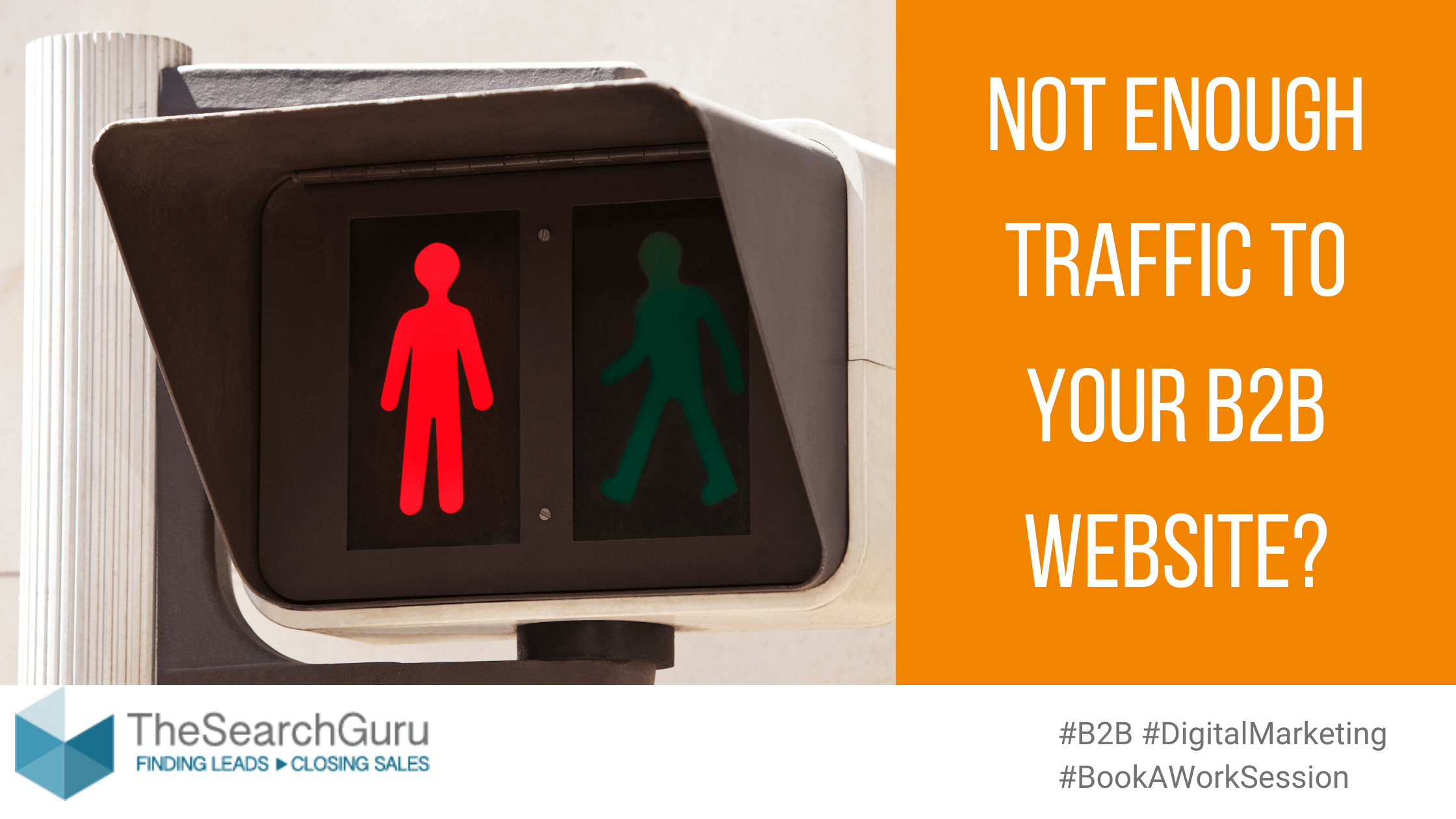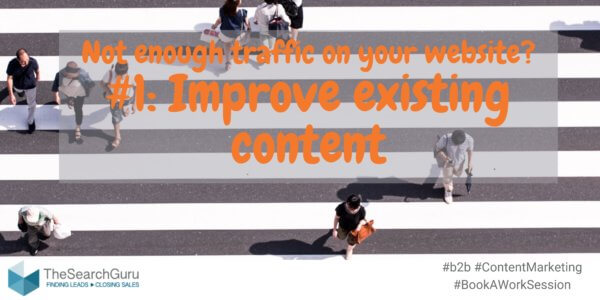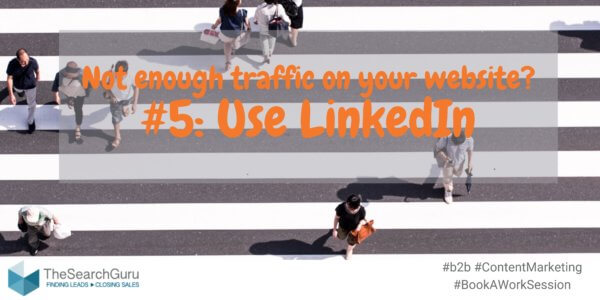It’s frustrating when you’ve been in business for over 30 years, you’ve worked with the biggest companies, you are a well known brand among the experts and when you look at your website stats, you see less than 30 people come to your website daily. And to make things worse, the majority of those 30 people are employees.
What’s wrong with this website? Why aren’t people coming? We recently did a redesign, right?
Just so you know, you’re not alone. For many B2B businesses the website is just a commodity, an online catalog, which no one really pays attention to.
Being famous in your b2b niche is not like being a famous apparel or soft drinks brand. Yes, a few experts know you, but that’s it. Your brand is not advertised on billboards or in TV ads. It even is not present in the work you’ve done for those big names you’ve worked for.
So what’s to be done?
You need to figure out your priorities. Do you really need a lot of traffic, like thousands of visitors every day? I don’t think so. And would it satisfy you if you have people coming on the site, but not reading anything and not clicking around the other pages? The thing is it’s not any type of traffic that you need. You need traffic from the niche you’re serving and probably a slightly wider circle around this niche.
How do I get the right traffic on my B2B site?
First of all, to make this perfectly clear: to get any traffic on your website you need content. In steps 1 & 2 below you’ll find some easy (and relatively quick) ways to improve or create content. Once you have content, you’ll also want this content to have higher chances of ranking in the search results — that’s why you need to build backlinks as described in step 3. For steps 4 and 5 to work, you’d better have taken care of content first.
Here are the steps we recommend:
- Step 1: Improve existing content
- Step 2: Create content by using existing resources
- Step 3: Build backlink profile
- Step 4: Consider PPC campaigns
- Step 5: Use LinkedIn
Step 1: Improve existing content
Let me tell you a secret: Did you know that you probably have pages ranking in Google search results for the keywords you want to target? They are just not ranking high enough. You probably have pages ranking on position #46 for a very important keyword. That’s page 5 in Google, and nobody goes that deep to find information.
In Google the top 3 results get approximately 50% of the traffic. Positions 4-10 get 40-45%. Page 2 results get the remaining 5-10%. That’s it. No one goes further than that.
For the majority of websites the keyword ranking distribution looks like this — over 85% of the keywords they are ranking for are on page 3 and lower in Google search results:
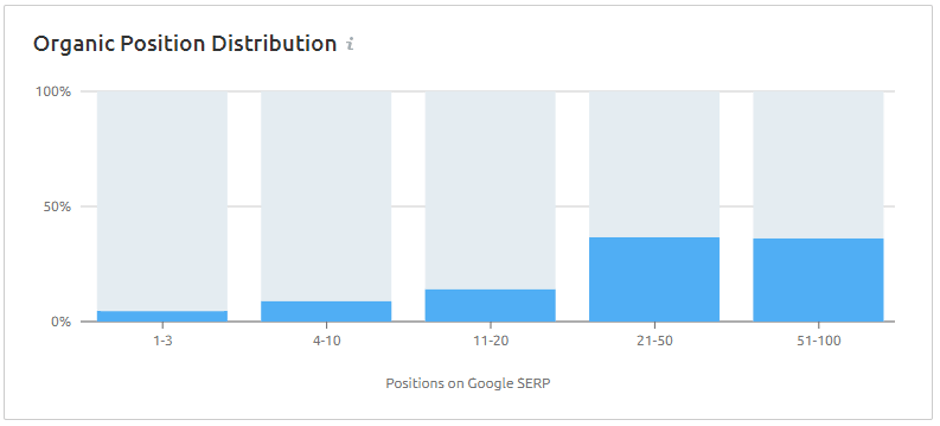
Source: SEM Rush
How does a search result position #46 help me?
Having a result in position #46 means you already have some content that is ranking in Google’s search results. Google’s bots have crawled your content and indexed it as a viable result on the topic. That doesn’t lead to any traffic on your website…yet. What you need to do next is review those keywords and content and optimize them for better ranking. Here’s the process:
Step 1.1: Analyze the low-hanging keyword opportunities — these are keywords that rank positions 11 to 30 in Google search results. (You can use a tool called SEMrush.com to find these.)
Step 1.2: Arrange those keywords by search volume to see which keywords are the biggest opportunities.
Step 1.2.1: Another option to prioritize keywords is to go after lower in volume, but higher in sales intent terms, where the keyword difficulty is lower (Keyword difficulty in SEMRush is a metric of 1-100, which shows the competition levels for a keyword, 100 meaning extremely competitive, and harder to rank in the search results.).
Step 1.3: Analyze the terms and choose the ones important for your business.
Step 1.4: See which page is ranking for the chosen terms and optimize the content for better search engine rankings:
- Check the pages currently ranking for the term
- See if there are sections and information on those top ranking pages that your page is currently lacking
- Find questions people search with, around the topic
- Make changes on your page to improve that page’s content, based on these findings
- Try to build backlinks to the page (internal and external)
We call this the Content Optimization Process and, as our gift to you, here is a great template you can follow to help you.
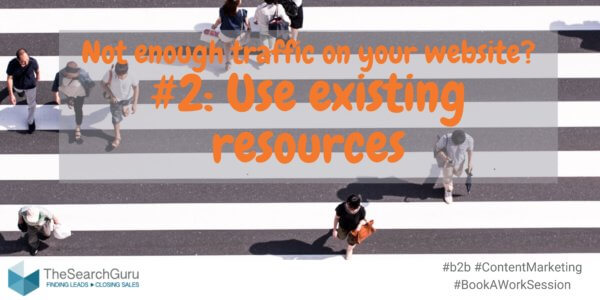
Step 2: Create content by using existing resources
What kind of content do you need on your website? You need content that your target audience is interested in. It could be about product or service specifics, or how onboarding works or how you provide assistance. Don’t you think you already have this type of content available somewhere? Yes! For example, your email communication with customers is probably full of golden nuggets you can easily transform into website content.
Here are some of the best sources of content you can use:
- Sales communication notes/guides — common questions people ask on sales calls
- Email communication, both pre- and post-sale
- Ticketing system/support system logs
- Internal product/service documentation
Question and Answer sections are very helpful in the digital world. People often are unclear about many aspects of your business and services, and go online to learn more.
Chances are you already know what these questions are, because you’ve answered them time and time again over the years on the phone or via email. Just grab this gold, polish it up and it might just become the best content on your product/service pages.
Find more about FAQs and search engine optimization here.
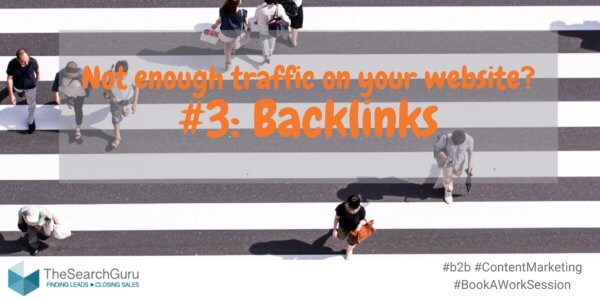
Step 3: Build the backlink profile
Do you know why backlinks are important? Because they mean credibility. They mean some people, out there, who are building and investing in their online presence, think your website is an important resource and would like to recommend it to their users.
Backlinks were the initial authority measure Google’s founders used to rank the results in their search engine.
In short, having quality content is great but, in order to show up at the top of the search results, you need backlinks.
How do I get backlinks?
Here comes the best part. If you really have been in business for a while, you should have partners you do business with. They will be the best source for backlinks. You can go and check partners’ websites and see if and how they promote others’ services and ask for a listing.
You can also reach out to organizations you’re part of and ask for a listing with a link — you’re most probably paying them already, they must have just forgotten to link back to you. So go ask.

Step 4: PPC campaigns
OK, if you worked on steps 1 & 2 and are proud of how your website turned out, you may consider testing PPC campaigns. PPC stands for pay per click, which refers to ads within the search engine results.
PPC results usually come up before the organic results and have a mark notifying they are ads:
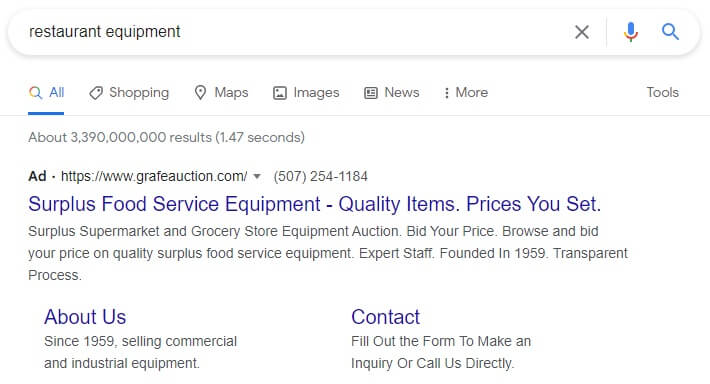
To appear as such a result, you need to create a campaign in Google Ads, create the ad and choose the keywords you want to show up for and, of course enter your credit card information. You’ll be charged when someone clicks on your ad, not just when they see it.
We recommend you start with a PPC campaign as you’ll see immediate results from the efforts you’ve invested in your website.
Step 5: LinkedIn
LinkedIn is the business social media and it offers a wide range of opportunities to find and attract your target customers.
If you think you can find your people on LinkedIn you need to invest in your personal and company pages and make them recognizable.
Then you can continue with an organic strategy of creating content and promoting it on LinkedIn or try LinkedIn’s paid lead gen ads. Check out our B2B LinkedIn Cheat Sheet for more detailed instructions.
Keep in mind that people want to see you on average 7-9 times before they decide to contact you and it makes sense to be present in the top channels where your targets spend their time online.
Let’s work on this together: book a free work session
All companies we speak with have unique problems, and we’ve yet to find anyone who isn’t primarily plagued by too few resources. Take us up on a free training/work session where we can discuss your unique problems and offer solutions from top B2B marketers. Book one here:

